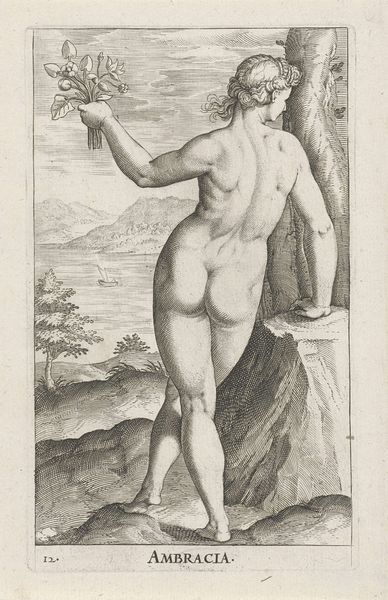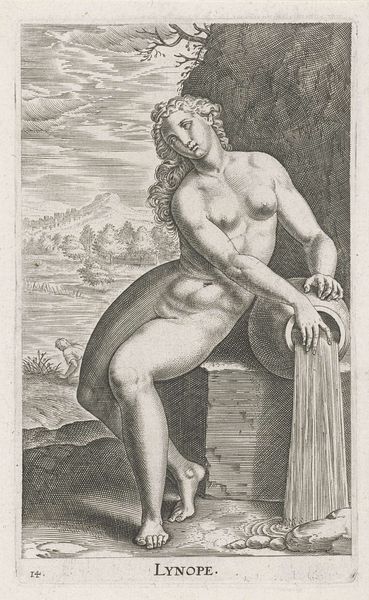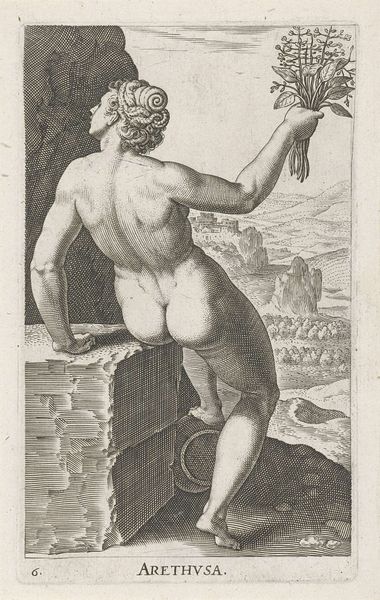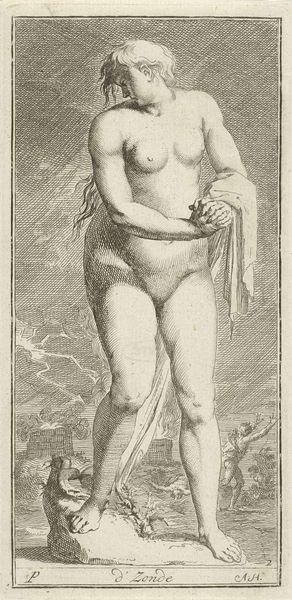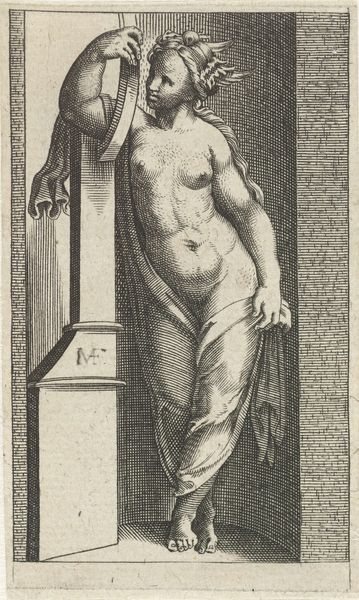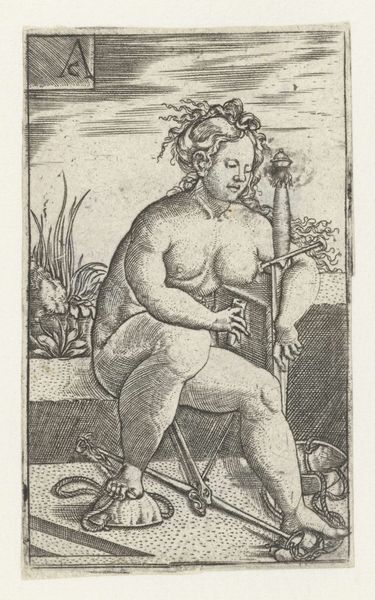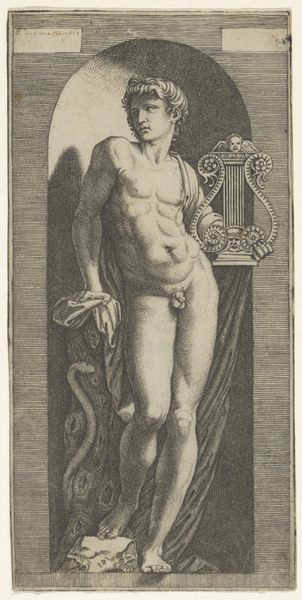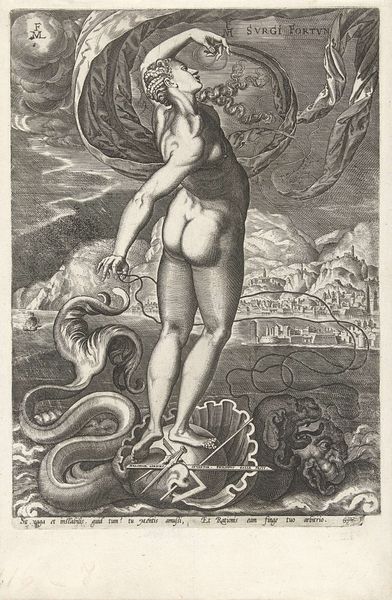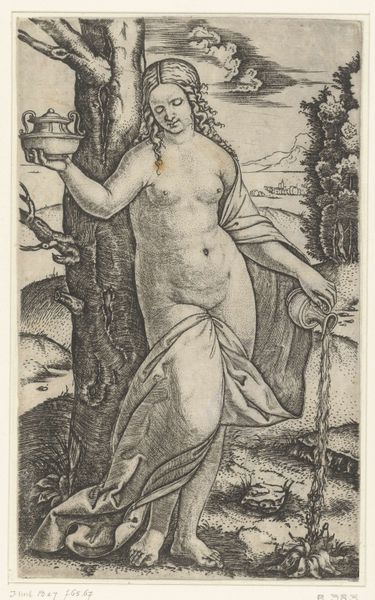
print, engraving
#
allegory
# print
#
old engraving style
#
mannerism
#
nude
#
engraving
Dimensions: height 165 mm, width 101 mm
Copyright: Rijks Museum: Open Domain
Editor: This is "Waternimf Hippoccrene," an engraving by Philips Galle, dating back to 1587. The nymph's pose is quite striking; there's a classical grace, yet also something quite earthly about her. How do you interpret this work? Curator: Galle's engraving offers a fascinating glimpse into the cultural anxieties of the late 16th century. Mannerism, as seen here, with its stylized figures and ambiguous spaces, reflects a period of upheaval in Europe. Note the pronounced musculature and idealized, yet somehow *off* proportions. It isn't simply about beauty; it's about power and representation. Who did images like this serve, and what was the intended audience? Editor: It feels like it's meant for a learned audience, maybe those familiar with classical mythology. Is this image meant to educate, or perhaps elevate, the viewer? Curator: Exactly. Printmaking was vital to disseminating knowledge and shaping public perception. Galle was part of a sophisticated network. Consider where these prints were displayed: private collections, libraries, even used in books. It suggests a cultural elite shaping the discourse around mythology and ideal beauty to reassert its own dominance through these representations. Notice how even a "natural" element like water is rendered in such a highly artificial, almost architectural way. Editor: That's a sharp observation; I hadn’t thought of the water that way, but it really reframes the entire piece for me! The control, the intention… it’s quite different than just a pretty picture. Curator: Galle's "Waternimf Hippoccrene" then becomes less about pure aesthetics, and more about how power structures manifested in the visual culture of the time. We see art’s function in propagating ideologies. Editor: I'll certainly look at art differently from now on; not just at *what* is shown, but also *why*, and for whom. Curator: Precisely. The "who," "why" and "for whom" are often the most revealing elements of any artwork!
Comments
No comments
Be the first to comment and join the conversation on the ultimate creative platform.

